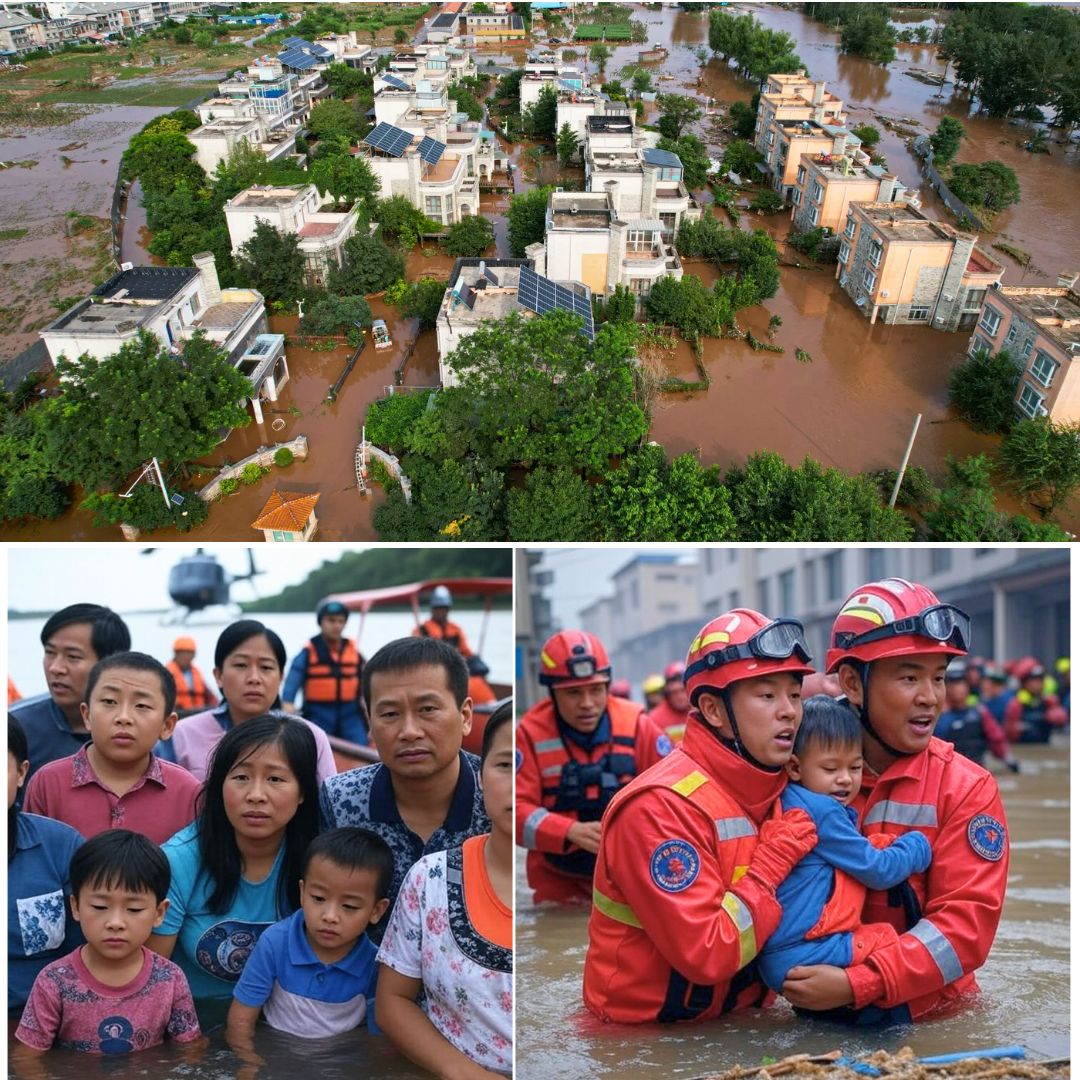Since July 23, 2025, Beijing has been grappling with severe floods caused by relentless rainstorms, resulting in at least 30 deaths and the evacuation of more than 80,000 residents. The northern mountainous districts of Miyun and Yanqing are the worst affected, with 28 and 2 fatalities respectively.
Torrential rainfall, peaking at 573.5 mm in Miyun—almost the city’s annual average—has led to widespread infrastructural damage, power outages impacting over 130 villages, and communication blackouts. The municipal government declared the highest flood alert, urging citizens to stay indoors as President Xi Jinping and Premier Li Qiang spearhead emergency response efforts focused on rescue, relocation and damage control, with heavy rain expected to continue in the coming days.
Severe Weather Impact and Human Cost
The extraordinary rainfall began over the weekend, intensifying through Monday, overwhelming Beijing’s drainage systems and triggering flash floods and landslides. Miyun district bore the brunt of the downpour, with reported rainfall totaling 573.5 mm—nearly equivalent to the city’s typical yearly precipitation. The abrupt flooding washed away roads, collapsed infrastructure, flooded homes, and led to power outages in 136 villages. Communication networks also faced significant disruptions, isolating communities and complicating rescue operations.
The floods displaced more than 3,700 people in Miyun alone, with many relocated to temporary shelters. Local residents described the floodwaters as rising suddenly, giving little time to salvage possessions or evacuate safely. Transportation and daily life came to a near halt, with numerous flights and train services delayed or cancelled. Premier Li Qiang emphasised the critical nature of ongoing search and rescue missions, calling for unyielding coordination among emergency teams to minimise further casualties. President Xi Jinping ordered “all-out” disaster relief efforts, stressing speed and resource mobilisation to support affected communities and restore normalcy.
Regional Spread and Government Response
While Beijing faced the most severe impact, other northern provinces—including Hebei, Liaoning, Shandong, and Tianjin—are also experiencing heavy rains and flooding, exacerbating the humanitarian crisis. These areas have reported additional casualties, missing persons, and significant property damage, especially from landslides triggered by the saturated terrain.
In response, China’s government has mobilised tens of millions of dollars in financial aid and emergency resources across the affected regions. Preventative measures have been enacted including the closure of schools, suspension of public gatherings and construction activities, as well as the controlled release of reservoir water to alleviate downstream flood risks. Authorities are maintaining heightened alerts and cautioning citizens about potential secondary flooding and landslide dangers.
Experts note that such extreme summer weather events are becoming more frequent and severe, linked to climate change’s impact on atmospheric conditions. The floods serve as stark reminders of the urgent need for improved disaster preparedness and infrastructure resilience in rapidly urbanising and environmentally vulnerable regions.
The Logical Indian’s Perspective
The tragic flooding in Beijing and neighbouring provinces illustrates the acute human suffering caused by escalating climate-related disasters. It exposes vulnerabilities in infrastructure and urban planning that must be addressed with urgency through sustainable development practices. Beyond emergency rescue and recovery efforts, there is a pressing need to integrate climate mitigation and adaptation strategies, including green urban design, effective water management systems, and community resilience programmes.
As a global society, we must cultivate empathy and solidarity for those displaced and grieving, recognising that climate disasters know no borders. Open dialogue and international cooperation on climate action are essential to protect vulnerable populations and prevent further loss of life.
The Logical Indian urges constructive conversations and proactive initiatives rooted in kindness, harmony, and coexistence.











